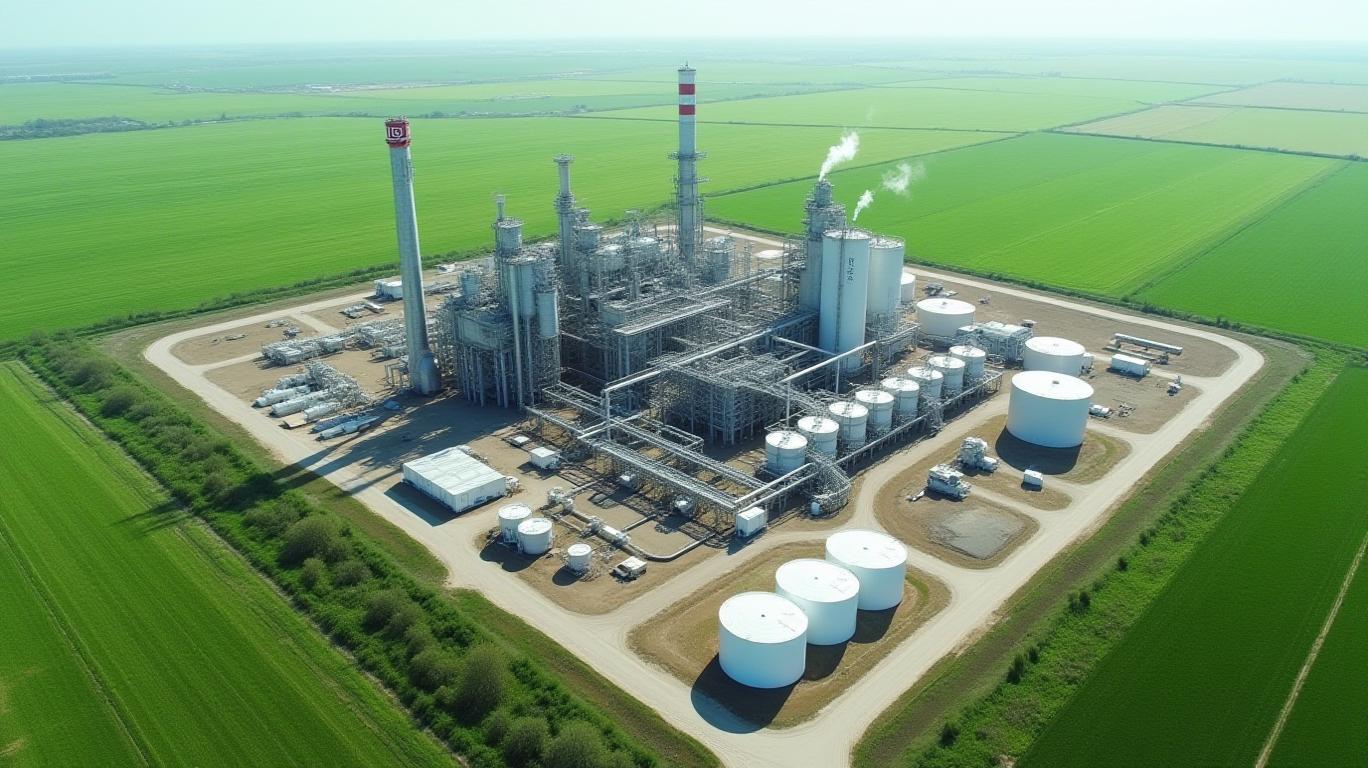REX American Resources: Navigating Volatility with Shareholder Returns and Sustainable Growth
REX American Resources Corporation's Q1 2025 results underscore a company strategically balancing near-term shareholder value creation with long-term investments in decarbonization. Despite headwinds from lower commodity prices and volumes, REX demonstrated financial resilience, aggressive capital allocation, and progress toward its sustainability goals—all while maintaining a fortress-like balance sheet. For investors seeking a blend of income and environmental innovation, this is a compelling story.
Financial Resilience Amid Headwinds
REX's Q1 net income of $8.7 million marked its 19th consecutive quarter of positive earnings in its core ethanol business—a testament to operational discipline. While revenue dipped 1.8% year-over-year to $158.3 million due to weaker distiller grains pricing, ethanol sales volumes held steady at 70.9 million gallons. Gross profit remained stable at $14.3 million, signaling cost controls are intact. Crucially, REX's liquidity remains bulletproof: $315.9 million in cash, cash equivalents, and short-term investments with zero bank debt. This financial flexibility positions REX to weather volatility in agricultural commodity markets, which have historically pressured ethanol producers.
Shareholder Returns: Aggressive Buybacks Fuel Value
REX's commitment to returning capital to shareholders is undeniable. In Q1 alone, the company repurchased 822,256 shares for $32.7 million—4.7% of outstanding shares—and has now retired 6.8% of shares since December 2024. With $118 million remaining under its current authorization, REX is systematically reducing its share count, amplifying per-share metrics. This strategy isn't just shareholder-friendly; it's a calculated move to boost valuation multiples as the company transitions toward higher-margin sustainability initiatives.
The buyback cadence aligns with REX's disciplined capital allocation:
The Carbon Capture Pivot: Building Long-Term Resilience
REX's most compelling long-term play is its One Earth ethanol expansion and carbon capture projects. With construction of the carbon capture facility completed in fiscal 2024, the company is now awaiting final EPA Class VI injection well approval—a milestone expected by January 2026. Once operational, this system could sequester 500,000+ tons of CO2 annually, positioning REX to sell carbon credits and qualify for federal incentives under the Inflation Reduction Act.
The $122.7 million already invested toward the $220–$230 million total budget highlights REX's seriousness about this pivot. By integrating carbon capture into its ethanol plants, REX isn't just reducing emissions; it's future-proofing its business against tightening regulations and ESG-driven demand.

Risks on the Horizon: Commodity Volatility and Regulatory Hurdles
No investment is without risks. Ethanol margins remain tied to corn prices, gasoline demand, and distiller grains sales—all of which are prone to swings. Delays in EPA permitting could also push out the timeline for carbon credit revenue. However, REX's fortress balance sheet and 19-quarter earnings streak suggest it can endure these headwinds. The company's management has also shown a knack for tactical capital allocation, prioritizing projects with clear ROI timelines.
Conclusion: A Compelling Risk-Adjusted Opportunity
REX American Resources offers a rare combination: a proven income generator (via buybacks and consistent dividends) and a growth engine in carbon capture. With a balance sheet that allows it to self-fund sustainability projects and a leadership team executing decisively, REX is primed to capitalize on the clean energy transition.
For investors, the key question is whether the near-term dip in ethanol margins outweighs the long-term tailwinds of regulatory support and ESG-driven demand. Given REX's financial strength and strategic focus, the answer is clear. This is a stock to buy now—before the market fully appreciates its dual mandate to reward shareholders and reinvent itself for the carbon-constrained future.
Act before the next catalyst: the EPA's permitting decision in early 2026 could unlock a valuation re-rating. The time to position is now.

Comments
No comments yet